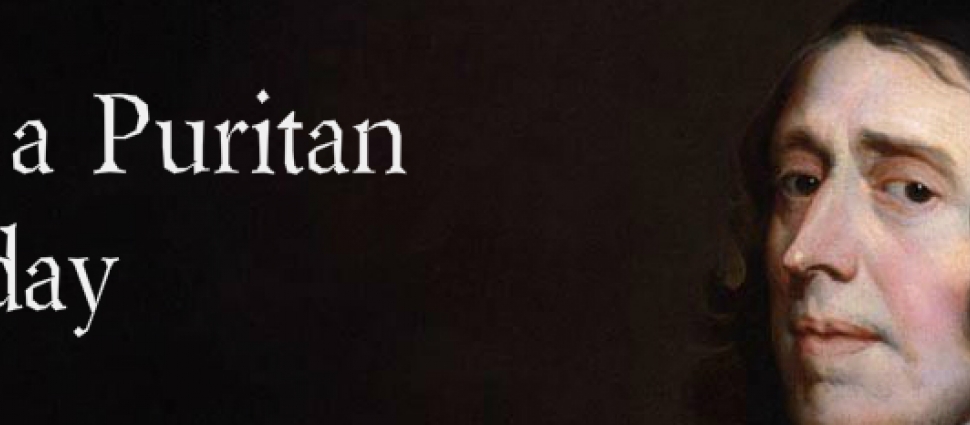Meet a Puritan: Lewis Bayly

Mar 14, 2016
Life
Lewis Bayly (1575-1631) was born around 1575 at Carmarthen, Wales, where Thomas Bayly, who probably was his father, was serving as curate at that time. Bayly secured the living of Shipston-on-Stour, in Worcestershire, in 1597, and three years later was presented to the crown living of Evesham in the same county, where he served as headmaster of the grammar school. Bayly soon became known for his preaching and so was appointed a chaplain to Prince Henry within a few years of the accession of King James. In 1606, he was presented to the rectory of Llanedi, Carmarthenshire, but remained largely at Evesham. Though he was a conformed Calvinist who respected the authority of the church, Bayly had emphases in common with the Puritans. Shortly after his wife passed away in 1608, in addition to his royal duties, he began to work on turning some of his sermons into what would become a Protestant classic, The Practice of Piety (see below).
In 1611, Bayly became treasurer of St. Paul’s Cathedral. In that same year, he earned a Bachelor of Divinity degree from Oxford and a doctorate in divinity in 1613. About that time, he succeeded Henry Mason at St. Matthew’s Friday Street in London. He was made prebendary of Lichfield in 1614 and, two years later, chaplain to the king. In December 1616, he was consecrated as bishop of Bangor, a position he held until his death.
Bayly’s Puritan convictions occasioned frequent conflict both at court and in his remote diocese of North Wales. In 1621, he was imprisoned for several months for his opposition to the Book of Sports. Fresh charges, endorsed by Archbishop William Laud, were brought against him in 1626 but resulted in nothing more than continued harassment. In 1630, Bayly was accused of ordaining clergy who had not fully accepted the doctrine and discipline of the Church of England. He successfully defended himself. He died in October 1631, survived by his wife and four sons.
Works
The Practice of Piety: Directing a Christian Walk, that He May Please God. In the seventeenth and eighteenth centuries, this classic Protestant work was one of the most universally read English devotional books after John Bunyan’s Pilgrim’s Progress. Bunyan himself traced the beginning of his spiritual convictions to the reading of Bayly’s handbook. One Puritan pastor even complained that his flock regarded the devotional as equally authoritative as the Bible.
First published in the early 1600s (probably 1611), The Practice of Piety was reprinted in 1612 in an amplified form. By 1643 it had reached its thirty-fourth English edition; by 1714, its fifty-first English edition; by 1792, its seventy-first English edition. In 1842, Grace Webster produced an edition with biographical notes. Throughout these centuries, The Practice of Piety has been translated in most European languages, including Dutch (1620), French (1625), Welsh (1629), German (1629), Polish (1647), and Romansch (1668). New England Puritans even translated it into the language used by Native Americans in Massachusetts (1665).
The Practice of Piety is filled with scriptural and practical guidelines on the pursuit of holy living. The author begins his work with “a plain description of God [in] his essence, person, and attributes.” This doctrine is the basis for piety; every grace that sinners need springs from the gracious character of God. Bayly arranges his work around the two destinies of mankind. We are either traveling the broad way to destruction or by divine grace are on the narrow way leading to life eternal. The unrepentant sinner has misery as his constant companion in infancy, in youth, and especially in adulthood and the later years of life. From the tragic scene of hell as a bottomless lake reserved for those who die unregenerate, Bayly turns to the unspeakable glories of heaven. Stressing the necessity of true faith and holy living, he concludes: “Get forthwith the oil of piety in the lamp of thy conversation, that thou mayest be in continual readiness to meet the bridegroom.” The rest of the book explains how to attain and maintain readiness for Christ’s second advent. Bayly shows how to overcome seven obstacles: wrong teaching, the bad example of prominent persons, God’s patience in delaying a sinner’s punishment, presuming upon God’s mercy, ungodly company, the fear of piety (as if it made its possessors depressed), and the illusion of a long life. Bayly then stresses how piety is to be cultivated, offering wise advice on the spiritual disciplines of prayer, Bible-reading, meditation, psalm-singing, Sabbath-keeping, stewardship, the commemoration of the Lord’s Supper, and walking daily with God. He shows how to guide our thoughts, words, and actions in times of health as well as times of sickness and affliction. He provides directives to protect us from despair and the fear of death. In short, this is a book about how to live godly and die well.
Bayly’s book, which has been credited as a fundamental influence in the rise of pietism, is not without shortcomings. It lacks a strong evangelical emphasis, and consequently says little on how one becomes a Christian. At places, it tends to foster the type of introspective meditation that leads to the very melancholy he sought to avoid.





